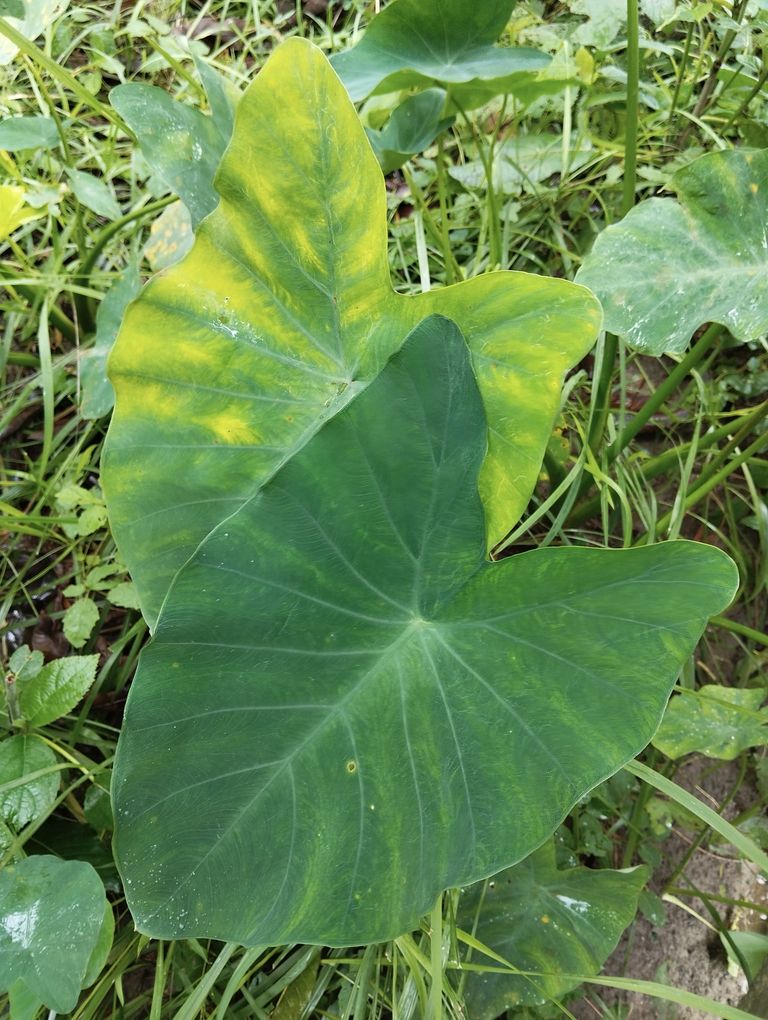
Health Benefits of Taro Leaves Kochu Shaak.
Taro leaves, commonly known as Kochu Shaak in Bengali, are a popular green leafy vegetable in many parts of Asia, particularly in India, Bangladesh, and Southeast Asia. These large, heart-shaped leaves come from the taro plant, scientifically known as Colocasia esculenta. The leaves are packed with numerous nutrients that make them a beneficial addition to your diet. In this blog, we will explore the health benefits of taro leaves, how to prepare them, and why they should be a part of your daily meals.
Nutritional Composition of Taro Leaves
Taro leaves are a powerhouse of essential vitamins and minerals. They are rich in:
Vitamins: Taro leaves are an excellent source of Vitamin A, Vitamin C, and Vitamin E. Vitamin A helps in maintaining healthy vision, Vitamin C boosts immunity and promotes skin health, while Vitamin E acts as an antioxidant that protects cells from oxidative damage.
Minerals: The leaves are also rich in essential minerals like calcium, iron, potassium, magnesium, and phosphorus. Calcium and phosphorus are vital for maintaining strong bones, while iron helps in preventing anemia by boosting hemoglobin production. Potassium is beneficial for heart health, as it helps regulate blood pressure.
Dietary Fiber: Taro leaves are an excellent source of dietary fiber, which is essential for digestive health. Fiber helps in maintaining bowel regularity and prevents constipation.
Antioxidants: The leaves are loaded with antioxidants like beta-carotene, polyphenols, and flavonoids, which help in reducing oxidative stress and inflammation in the body.
Low Calories: Despite being highly nutritious, taro leaves are low in calories, making them an excellent food for weight management.
Health Benefits of Taro Leaves
1. Rich Source of Antioxidants
Taro leaves are rich in antioxidants, particularly beta-carotene, which gets converted into Vitamin A in the body. Antioxidants are vital in neutralizing free radicals in the body, thus protecting cells from oxidative stress and reducing the risk of chronic diseases like heart disease, diabetes, and cancer.
2. Boosts Immune System
The high Vitamin C content in taro leaves plays a significant role in boosting immunity. It helps the body fight off infections, supports wound healing, and enhances the body’s ability to absorb iron from plant-based foods, reducing the risk of anemia.
3. Promotes Eye Health
Taro leaves are a rich source of Vitamin A and beta-carotene, both of which are crucial for maintaining eye health. Regular consumption of taro leaves can improve vision and reduce the risk of age-related macular degeneration and cataracts.
4. Improves Digestive Health
The fiber content in taro leaves aids in digestion and promotes gut health. Fiber helps in softening stools, reducing constipation, and promoting regular bowel movements. It also plays a role in maintaining healthy cholesterol levels by binding to cholesterol in the digestive tract and preventing its absorption.
5. Supports Heart Health
Potassium, found in abundance in taro leaves, is essential for heart health. It helps regulate blood pressure by balancing the effects of sodium and relaxing blood vessels. Consuming taro leaves can help reduce the risk of hypertension and other cardiovascular diseases.
6. Strengthens Bones
Taro leaves are an excellent source of calcium and phosphorus, two minerals that are essential for maintaining strong and healthy bones. Regular consumption can help prevent conditions like osteoporosis and support overall bone health.
7. Helps in Weight Management
Taro leaves are low in calories and fat while being rich in nutrients and fiber, making them an ideal food for weight management. The fiber content helps you feel full for longer, reducing the urge to overeat and aiding in weight loss.
8. Anti-Inflammatory Properties
The antioxidants and phytonutrients in taro leaves exhibit anti-inflammatory properties, which can help in reducing inflammation in the body. This is beneficial in managing conditions like arthritis and other inflammatory diseases.
9. Aids in Blood Sugar Control
Due to the high fiber content, taro leaves can help in regulating blood sugar levels by slowing down the absorption of glucose in the bloodstream. This makes taro leaves an excellent food choice for individuals with diabetes or those looking to manage their blood sugar levels.
How to Cook and Prepare Taro Leaves Safely
While taro leaves are highly nutritious, they must be prepared properly before consumption to avoid potential health risks. The leaves contain calcium oxalate crystals, which can cause irritation in the mouth, throat, and stomach if consumed raw. Cooking the leaves thoroughly can eliminate this risk.
Steps to Prepare Taro Leaves:
- Wash thoroughly: Rinse the leaves under running water to remove dirt and impurities.
- Remove the stalks and veins: Trim the stalks and thick veins, as these parts tend to contain higher concentrations of calcium oxalate.
- Boil or steam: Boiling or steaming the leaves helps to break down the calcium oxalate crystals, making the leaves safe to consume. Ensure that the leaves are cooked for at least 10-15 minutes.
- Add to dishes: Once cooked, taro leaves can be added to various dishes such as soups, curries, and stir-fries. In Bengali cuisine, taro leaves are often used to make dishes like "kochur shaak bhaja" (fried taro leaves) or "kochur shaak chorchori" (a mixed vegetable dish with taro leaves).
Precautions When Consuming Taro Leaves
- Always cook thoroughly: As mentioned earlier, consuming raw or undercooked taro leaves can cause irritation due to the presence of calcium oxalate crystals. Always boil or steam the leaves before using them in any recipe.
- Portion control: Although taro leaves are healthy, it is advisable to consume them in moderation, especially for individuals who are prone to kidney stones, as oxalates can contribute to the formation of stones in sensitive individuals.
Conclusion
Taro leaves, or Kochu Shaak, are a nutrient-dense vegetable that offers a wide range of health benefits. From boosting immunity to improving digestive health, strengthening bones, and promoting heart health, the leaves are a fantastic addition to a balanced diet. However, proper preparation is crucial to ensure the leaves are safe to eat. With their rich content of vitamins, minerals, and antioxidants, incorporating taro leaves into your meals can significantly enhance your overall health and well-being.
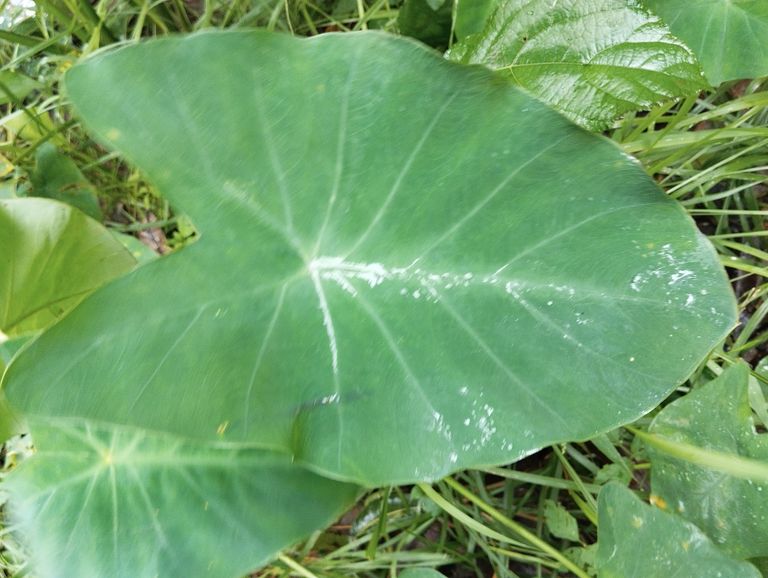
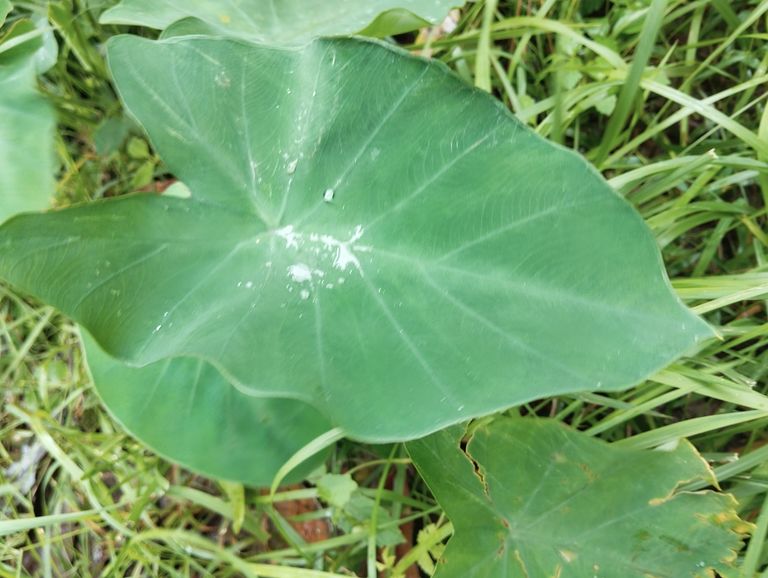
A Comprehensive Guide to Taro (Kochu) Cultivation
Taro, known as Kochu in Bengali, is a tropical plant widely cultivated for its edible corms, leaves, and stems. It holds immense significance in the agricultural landscape, particularly in Southeast Asia, Africa, and the Pacific Islands. In Bangladesh, Kochu is a staple crop, rich in nutrients and adaptable to various climatic conditions. This blog provides an in-depth look into the cultivation of Kochu, its benefits, and how farmers can maximize their yield while maintaining environmental sustainability.
1. Introduction to Taro (Kochu)
Taro (Colocasia esculenta) is a perennial herbaceous plant that thrives in warm, humid climates with well-distributed rainfall. The plant is primarily cultivated for its underground corms, which are rich in carbohydrates and fibers. The leaves and stems are also consumed in many parts of the world as vegetables.
Kochu has deep cultural roots in Bangladesh, often used in traditional dishes like "Kochu Pata Chingri" (taro leaves with shrimp) and "Kochur Loti" (taro stolons curry). The plant’s resilience and ease of growth make it a vital crop for smallholder farmers.
2. Varieties of Kochu
There are several varieties of Kochu grown across the world, each suited for different climates and soil types. Some of the most common varieties cultivated in Bangladesh and neighboring regions include:
- Mukhi Kochu (Taro Proper): This variety is cultivated mainly for its corms, which are starchy and used in various culinary dishes.
- Loti Kochu (Taro Stolons): The stolons or stems of this variety are widely used in Bengali cooking, especially in curries.
- Pani Kochu (Water Taro): As the name suggests, this variety grows best in waterlogged conditions and is popular in wetland areas.
3. Climatic and Soil Requirements
Climatic Conditions: Kochu thrives in tropical and subtropical climates with high temperatures ranging between 25°C and 35°C. A well-distributed rainfall of 1,500-2,500 mm per annum is ideal for the plant’s growth. It can also tolerate partial shading, making it a versatile crop in agroforestry systems.
Soil Requirements: Kochu prefers well-drained, fertile soils rich in organic matter. The ideal pH for taro cultivation is between 5.5 and 6.5. Sandy loam soils with good moisture retention capacity are best suited for its growth, though it can grow in a variety of soil types. Waterlogged soils are suitable for the cultivation of Pani Kochu (water taro).
4. Land Preparation and Planting
Proper land preparation is crucial for the healthy growth of Kochu. The land should be plowed several times to ensure it is free of weeds and has good aeration. It is advisable to incorporate organic compost or well-decomposed manure during plowing to enhance soil fertility.
Planting Time: The best time to plant Kochu is at the onset of the rainy season, typically between April and June, depending on the region.
Propagation: Kochu is primarily propagated through corms, cormels, or stolons. Select healthy and disease-free planting material. For corm-based planting, use medium-sized corms (150-200g) for best results.
Planting Method: Planting should be done at a depth of about 5-10 cm with a spacing of 45-60 cm between plants and 75-90 cm between rows. Proper spacing ensures adequate airflow and sunlight, reducing the risk of fungal diseases.
5. Irrigation and Water Management
Water is crucial for Kochu’s growth, particularly during its vegetative phase. The plant requires consistent moisture, especially in its early stages. However, over-irrigation should be avoided to prevent waterlogging (unless cultivating Pani Kochu).
- Irrigation Frequency: Irrigate the plants 2-3 times a week during dry spells, ensuring the soil is moist but not flooded.
- Waterlogged Conditions: Pani Kochu can tolerate waterlogged conditions, and in such environments, ensure that the field is flooded consistently for optimal growth.
6. Fertilizer Application
For healthy growth and high yields, Kochu requires adequate nutrient management. A well-balanced application of organic and inorganic fertilizers can improve plant health and productivity.
- Organic Fertilizers: Use well-decomposed cow dung or compost at a rate of 15-20 tons per hectare. Organic fertilizers not only improve soil structure but also enhance the plant’s resistance to pests and diseases.
- Chemical Fertilizers: A combination of nitrogen (N), phosphorus (P), and potassium (K) should be applied at 80:40:80 kg per hectare. Apply half the nitrogen and all the phosphorus and potassium at the time of planting. The remaining nitrogen can be applied in two split doses during the growing season.
7. Weed Management
Weeds compete with Kochu for nutrients, water, and sunlight, potentially reducing crop yield. Effective weed management is crucial, especially during the early stages of plant growth.
- Manual Weeding: Manual weeding should be done 2-3 times during the growing season, depending on the severity of weed infestation.
- Mulching: Applying organic mulch, such as straw or leaves, around the plants can help suppress weed growth and retain soil moisture.
8. Pests and Diseases
Though Kochu is a relatively hardy plant, it can be affected by certain pests and diseases. Early detection and proper management are essential to prevent crop loss.
- Common Pests: Leaf-eating caterpillars, aphids, and mites are common pests that can affect Kochu. Insecticides should be used judiciously, ensuring minimal harm to beneficial insects.
- Common Diseases: Taro leaf blight, root rot, and fungal infections are common in humid conditions. Fungicides and proper field hygiene can help manage these diseases.
9. Harvesting and Yield
Kochu can be harvested approximately 6-9 months after planting, depending on the variety and growing conditions. The corms are mature when the leaves start yellowing and wilting.
- Harvesting Method: Carefully dig up the corms without damaging them. The stolons can be harvested earlier, once they reach the desired size.
- Yield: On average, Kochu yields 15-20 tons per hectare, though improved cultivation practices can increase the yield to 25-30 tons.
10. Post-Harvest Management
After harvesting, the corms should be cleaned and cured in a cool, dry place to enhance their shelf life. Proper storage facilities are essential to prevent spoilage, especially in humid conditions.
- Storage: Store the corms in a well-ventilated area, ensuring they are free from moisture to prevent rot. Kochu can be stored for 2-3 months under optimal conditions.
- Processing: In addition to direct consumption, Kochu can be processed into flour, chips, or other value-added products, increasing its market value.
11. Economic and Nutritional Importance
Kochu is not only a vital food source but also has significant economic value. The crop is rich in carbohydrates, fiber, vitamins, and minerals, making it a nutritious staple for many households.
- Nutritional Benefits: Kochu corms are high in starch, while the leaves are rich in iron, calcium, and vitamins A and C. The plant is especially beneficial for people with dietary restrictions like gluten intolerance.
- Economic Benefits: In Bangladesh and other tropical regions, Kochu provides a steady income for smallholder farmers, with both local and export markets offering opportunities for profit.
12. Challenges in Kochu Cultivation
Despite its resilience, Kochu cultivation faces several challenges that can impact productivity. These include:
- Climate Vulnerability: Changes in weather patterns, such as excessive rainfall or prolonged drought, can affect yields.
- Pest and Disease Outbreaks: Without proper management, pests and diseases can significantly reduce crop output.
- Market Access: Farmers may face difficulties in accessing lucrative markets, especially for export purposes, due to inadequate infrastructure.
13. Sustainable Practices for Kochu Cultivation
To ensure long-term productivity and environmental sustainability, farmers should adopt the following practices:
- Crop Rotation: Rotating Kochu with other crops like legumes can improve soil fertility and reduce pest and disease pressure.
- Organic Farming: Reducing chemical inputs and increasing the use of organic manure can improve soil health and biodiversity.
- Agroforestry: Incorporating Kochu into agroforestry systems can help diversify income sources while improving ecosystem resilience.
Conclusion
Kochu cultivation offers significant potential for both food security and economic stability in tropical and subtropical regions. By adopting modern farming techniques, farmers can improve their yield, ensuring a steady supply of this versatile crop. With its rich nutritional profile and market demand, Kochu continues to be a cornerstone of agricultural and cultural heritage in Bangladesh and beyond.
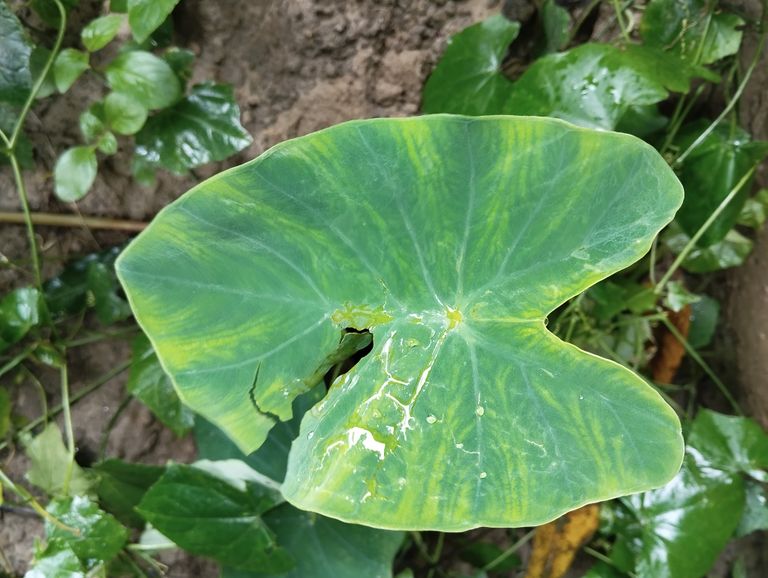
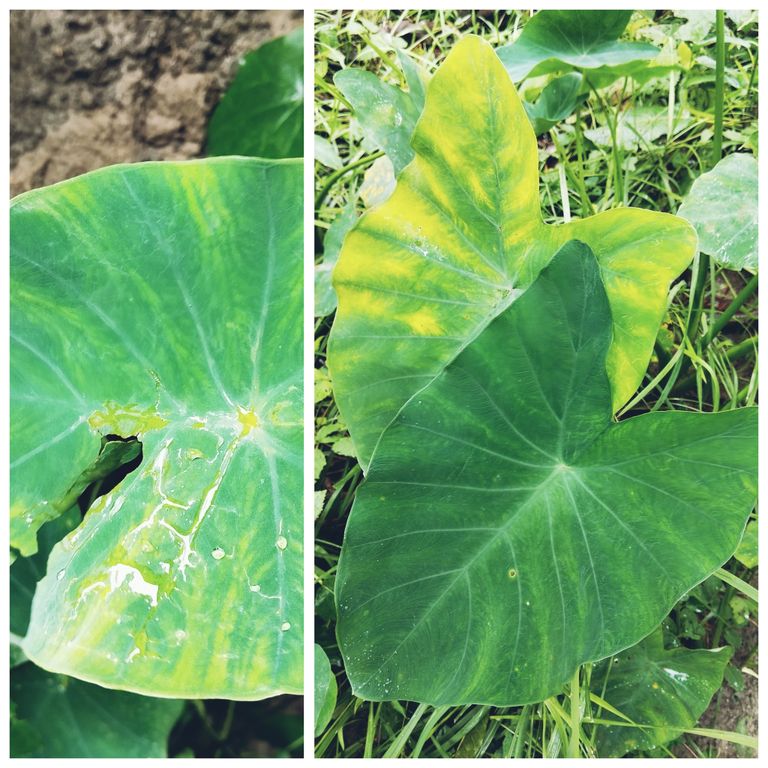
The Medicinal Benefits of Taro Leaves: A Natural Remedy
Taro leaves, scientifically known as Colocasia esculenta, are an integral part of traditional medicine in many cultures around the world, particularly in Asia and the Pacific islands. Known for their vibrant green color and heart-shaped appearance, these leaves offer a range of medicinal benefits that have been utilized for centuries. In this blog, we will explore the various health benefits of taro leaves, how they are used, and their significance in modern and traditional herbal medicine.
1. Rich Source of Essential Nutrients
Taro leaves are packed with essential vitamins and minerals. They are particularly rich in vitamins A, B, and C, which play a vital role in boosting the immune system, improving skin health, and supporting vision. Vitamin A, in particular, helps in maintaining the health of the eyes and skin, while vitamin C acts as a powerful antioxidant that helps fight free radicals, preventing cellular damage.
In addition to vitamins, taro leaves are high in minerals such as calcium, iron, potassium, and magnesium. These minerals are essential for maintaining healthy bones, regulating blood pressure, supporting muscle function, and preventing anemia.
Health Benefits:
- Boosts immune system function
- Supports healthy bones and muscles
- Enhances vision and skin health
- Prevents iron deficiency anemia
2. Promotes Digestive Health
Taro leaves are an excellent source of dietary fiber, which plays a key role in promoting healthy digestion. Consuming fiber-rich foods can help regulate bowel movements, prevent constipation, and reduce the risk of digestive disorders such as irritable bowel syndrome (IBS) and colon cancer.
Moreover, the fiber in taro leaves helps in the maintenance of a healthy gut microbiome, which is essential for overall digestive health. The leaves also contain natural compounds that may have anti-inflammatory properties, further contributing to gut health.
Health Benefits:
- Improves digestion and prevents constipation
- Reduces the risk of digestive disorders
- Supports a healthy gut microbiome
3. Anti-Inflammatory Properties
Taro leaves contain several bioactive compounds that have been found to possess anti-inflammatory properties. Inflammation is the body’s natural response to injury or infection, but chronic inflammation can lead to various health problems such as arthritis, heart disease, and diabetes.
The compounds present in taro leaves, including flavonoids and polyphenols, help reduce inflammation in the body, making them beneficial for those suffering from inflammatory conditions. Traditional medicine systems often use taro leaves to alleviate pain and inflammation in joints, muscles, and other parts of the body.
Health Benefits:
- Reduces chronic inflammation
- Alleviates pain in joints and muscles
- May help manage inflammatory diseases
4. Aids in Weight Management
For those looking to maintain a healthy weight or shed a few pounds, taro leaves can be an excellent addition to the diet. These leaves are low in calories but high in essential nutrients, making them a great choice for a weight-loss-friendly food. The fiber content in taro leaves promotes a feeling of fullness, which can prevent overeating and help in controlling calorie intake.
Moreover, the combination of fiber, vitamins, and minerals found in taro leaves helps to maintain energy levels and supports overall metabolic function, further aiding in weight management.
Health Benefits:
- Low-calorie, nutrient-dense food
- Helps promote satiety and prevent overeating
- Supports healthy metabolism
5. Regulates Blood Pressure
The potassium content in taro leaves plays a significant role in regulating blood pressure. Potassium is an essential mineral that helps balance the effects of sodium in the body, thus preventing high blood pressure. It also helps to relax blood vessels and promote better blood flow, which is crucial for maintaining cardiovascular health.
People suffering from hypertension or at risk of developing high blood pressure can benefit from including taro leaves in their diet, as they help in maintaining a healthy balance of electrolytes and support heart health.
Health Benefits:
- Regulates blood pressure
- Promotes better blood flow
- Supports heart health and prevents hypertension
6. Enhances Skin Health
Taro leaves are rich in antioxidants, particularly vitamins A and C, which are essential for maintaining healthy and youthful skin. Vitamin A helps in cell regeneration, while vitamin C plays a critical role in collagen production, which keeps the skin firm and prevents wrinkles. These antioxidants also protect the skin from damage caused by UV rays and environmental pollutants.
In traditional medicine, taro leaves are sometimes used topically to treat skin irritations, rashes, and wounds. The anti-inflammatory properties of the leaves help soothe the skin and promote faster healing.
Health Benefits:
- Promotes youthful and healthy skin
- Protects against UV damage and pollution
- Aids in skin regeneration and healing
7. Natural Detoxification
Taro leaves are also known for their detoxifying properties. The fiber and antioxidants present in these leaves help cleanse the body by removing toxins and waste products. Fiber aids in flushing out harmful substances from the digestive tract, while antioxidants neutralize free radicals that can cause cellular damage.
In some traditional practices, taro leaves are used in herbal teas or tonics to support liver function and improve the body’s natural detoxification processes.
Health Benefits:
- Supports natural detoxification processes
- Promotes liver health
- Helps eliminate toxins from the body
8. Potential Anticancer Properties
Some studies suggest that the bioactive compounds found in taro leaves may have anticancer properties. Flavonoids and other polyphenolic compounds in taro leaves have been shown to have antioxidant and anti-inflammatory effects, both of which are important in reducing the risk of cancer.
While more research is needed to confirm these findings, traditional healers have long believed in the cancer-preventive properties of taro leaves, using them as part of a holistic approach to preventing disease.
Health Benefits:
- May reduce the risk of cancer
- Provides antioxidant protection against cell damage
- Supports overall health and wellness
How to Use Taro Leaves in Herbal Remedies
While taro leaves are commonly consumed in cooked dishes, they can also be used in herbal remedies. However, it’s important to note that raw taro leaves contain calcium oxalate, which can be toxic if ingested in large amounts. Cooking the leaves thoroughly helps to neutralize this compound, making them safe to consume.
Telegram and Whatsapp